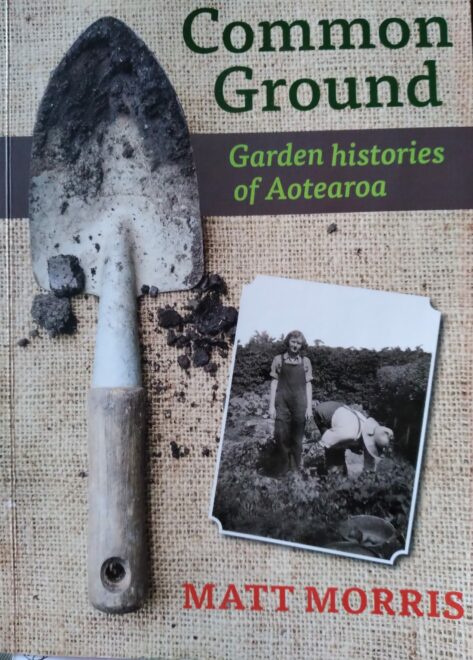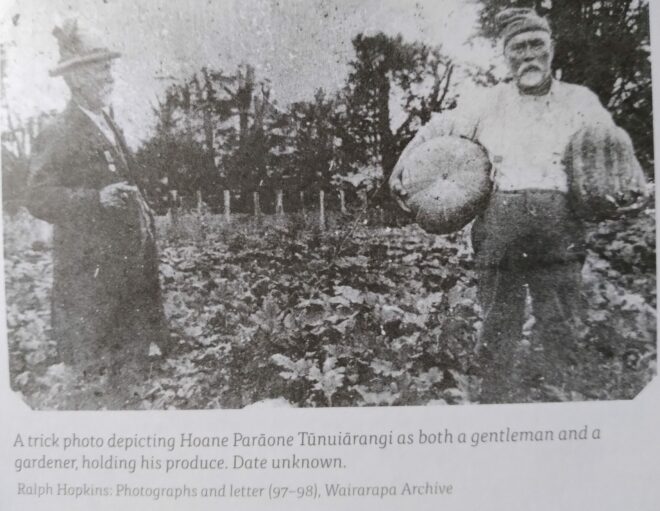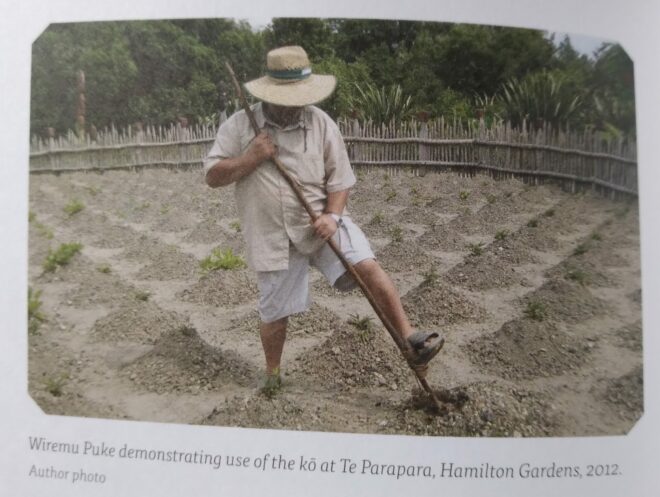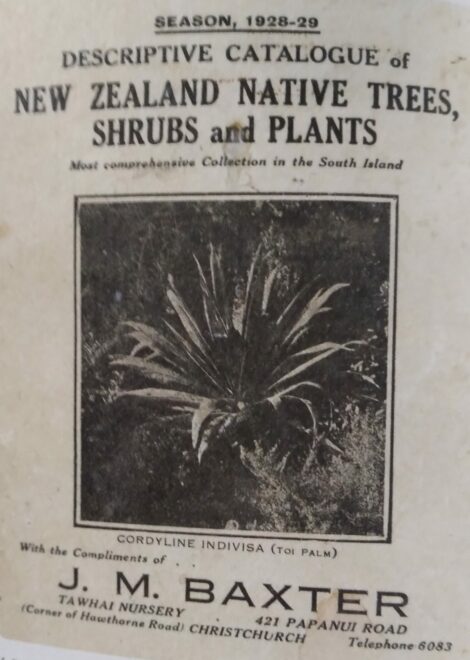 Common Ground – Garden Histories of Aoteoroa by Matt Morris, Otago University Press, 2020, 276 pages
Common Ground – Garden Histories of Aoteoroa by Matt Morris, Otago University Press, 2020, 276 pages
[Find an interview with the author at https://www.rnz.co.nz/audio/player?audio_id=2018774296]
I lapped this up: a ‘bottom up’ re-look, re-write of New Zealand garden history that is refreshingly focused on common everyday, productive food gardens, instead of those of the wealthy or ones that are professionally designed or public parks. Morris is interested in ordinary backyards (suburban or rural), full of veggies, berries and fruit trees.
He takes a longer look at Maori gardening (nga mara) during 700 years pre-European arrival and after colonisation, including Maori expertise in rapidly assimilating new species and their thriving exports of vegetables to Australia – which survives today. The book also covers settler garden history up to the present and considers tomorrow’s trends and needs, especially productive foodscapes in cities. That future could be less dependent on international or remote NZ food supply chains and more focused on seed-saving, acting on a growing desire for organic, local, heirloom varieties, farmers’ markets, community gardens and ‘grow-your-own’.

Gardening as a political act – of independent survival and resistance – gets welcome attention. Notions of ‘paradise’ (a lure for NZ’s systematic colonisation), ‘respectability’ (a mania for tidiness and order), ‘peer review’ (Kiwis driving around suburbs every Sunday looking at others’ homes and gardens), and ‘national identity’ are explored. A NZ identity is perhaps bound up in Kiwi gardens, as suggested by Austin Mitchell’s 1970s The Half Gallon, Quarter Acre Pavlova Paradise or esteemed Kiwi historian, Keith Sinclair’s, point that the house and garden were a crucial site for developing ‘a NZ identity’. As an aside, my Lincoln University thesis questioned myths of NZ identity. Most people were too busy weeding, mowing, picking and pruning to care!
Morris has expanded his PhD on Christchurch gardens by conducting, over ten years, oral history interviews across all New Zealand, as well as doing a survey, other interviews, archival research and hands-on community gardening. The result is a very accessible, ‘get your hands dirty’, practical ‘how we all did it’ and ‘what we’re doing, now’ story, rather than a dry history about arcane past practices. This makes for easy and fascinating reading.

You don’t have to be familiar with NZ geography, history or any of the characters mentioned, but if you know some of them, it enlivens the reading. I recognised Bob Crowder, pioneer Organics lecturer and demonstrator at Lincoln University (where I studied); Pico Wholefoods, a co-op where I used to buy organic veggies in Christchurch and where a few of my ‘alternative’ friends worked. Also appearing are some of the people planning future ‘food landscapes’ for Christchurch’s ‘red zone’ along the Avon, after the 2011 earthquake flattened houses.
Morris notes three elements that had been lacking in past writing on NZ home gardens and addresses these gaps:
- few localised studies of garden making
- scant recognition of how gardening can signify resistance to a dominant culture (be that Maori v Pakeha (white settler), productive v fashionable, etc.)
- little written on gardening’s ecological effects on the wider environment. (Water-intensive, fossil-fuel-hungry, poison-based chemical regimes, collectively, have a huge impact.)

Those three themes inform and weave through the book’s eight chapters, which roughly follow the time from 1300 up until the 1790s when Europeans got serious about ‘settling’, through the Maori Land Wars, Waitangi Treaty, dispossession and a very mixed ‘New Zealand’ since 1840. The last two chapters, ‘The Collapse and Renewal of Home Gardening Culture, 1960-2020’ and ‘Dreams’, are especially fascinating. ‘Dreams’ looks at a 21st century term: ‘food sovereignty’. With COVID and world disasters stoking close-calls to a total collapse of food production and supply chains (cf. empty supermarket shelves) ‘grow-your-own’ instead of ‘import the cheapest’ looks sensible. Rising oil prices and, perhaps in the future, dwindling coal exports, mean a lot of the transport logistics, machinery and chemicals underpinning industrial agri-/horticulture look increasingly dicey.
To quote Morris, there is ‘fertile ground for optimistic community dreaming and wonderful opportunities for further renewal’. For example, Christchurch’s 2014 food resilience policy has a vision to be the ‘best edible garden city in the world’ and is establishing a community food hub in the central city, set in a community orchard and garden to showcase the local movement and to motivate other communities to re-look at wasted land, set up food gardens and get active. For people with no land, such as those living in flats, access to these hubs has obvious benefits for better all-round health.
Matt Morris has always lived in Christchurch. He began working in the Sustainability Office at the University of Canterbury, where he has been for the last decade. He’s deeply involved in community-led garden initiatives, has served on a local council, worked for the Organic Garden City Trust in the 1990s (under then Mayor, Vicki Buck), written garden columns for The Press newspaper and published a selection of those in . This latest effort is strongly recommended.
Reviewer: Stuart Read

